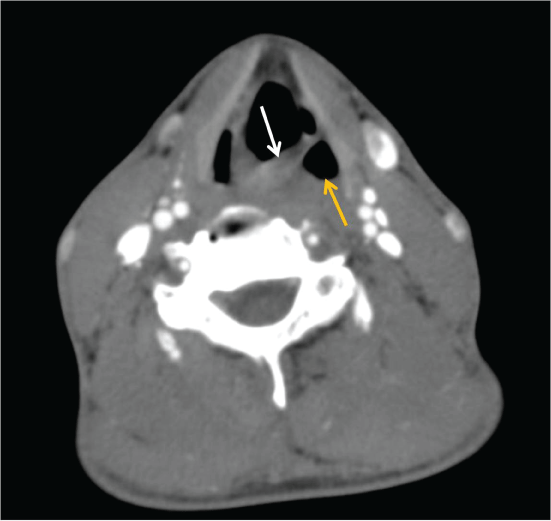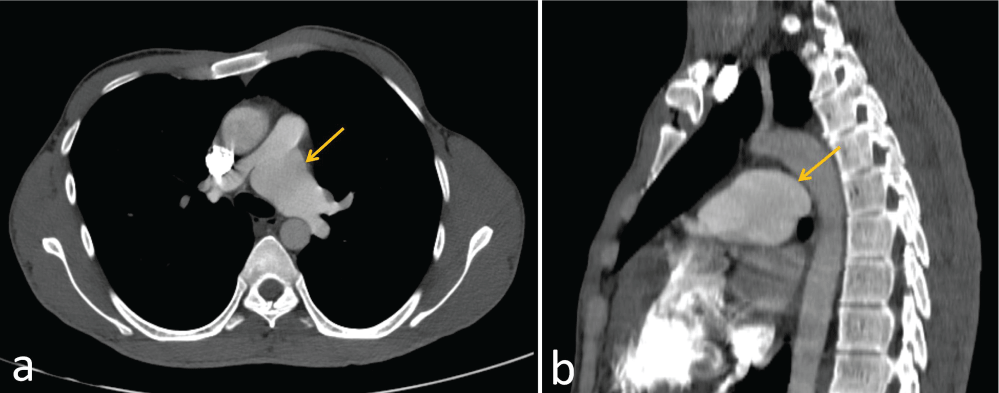Ortner's syndrome, Cardiovocal syndrome, Pulmonary artery aneurysm
A 37-year-old non-smoker male patient with a 6-month history of hoarseness admitted to our hospital. Laryngoscopic examination revealed left vocal cord paralysis with immobile vocal cord in paramedian position. The patient underwent neck and chest CT imaging. Neck CT demonstrated thickening and medial deviation of the left vocal cord, dilatation of the left piriform sinüs suggesting left vocal cord palsy (Figure 1). Chest CT showed a fusiform aneurysmal dilatation of the proximal left pulmonary artery with 51 mm diameter (Figure 2). Left laryngeal nerve had been compressed between pulmonary artery aneurysm and arcus aorta.
Ortner's syndrome is mainly characterized by hoarseness secondary to recurrent laryngeal nerve palsy due to compression of enlarged cardiovascular structures. It is also referred as cardiovocal syndrome. The most common cause of Ortner's syndrome is left atrial enlargement due to mitral stenosis. Cardiac causes in addition to mitral stenosis that may lead to this problem, such as thoracic aortic aneurysm, congenital heart disease, primary pulmonary hypertension, aberrant subclavian artery syndrome, an enlarged pulmonary artery and iatrogenic reasons. CT is crucial for differential diagnosis of hoarseness and can provide high quality images of aneurysm and related thoracic structures. Echocardiographic evaluation may not satisfactory for definitive diagnosis. Elimination of compression over the nerve may reverse the hoarseness if the duration is not critically long and nerve is not irreversibly damaged. However, ischemia related nerve damages are not associated with good prognosis [1-4].

Figure 1: Neck CT image demonstrates thickening and medial deviation of the left vocal cord (white arrow) and dilatation of the left piriform sinus (yellow arrow) suggesting left vocal cord palsy.

Figure 2: Axial (a) Coronal; (b) Chest CT images show fusiform aneurysmal dilatation of the proximal left pulmonary artery (yellow arrow) with 51 mm diameter. Left laryngeal nerve had been compressed between pulmonary artery aneurysm and arcus aorta.